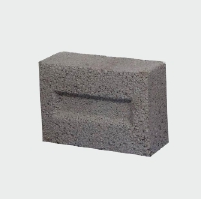Fly ash bricks from Flyash Bricks Manufacturer in
Mumbai have become a popular alternative to traditional clay bricks in
the construction industry. These bricks are made from fly ash, a byproduct of
coal-fired power plants, mixed with cement, sand, and water. Fly ash bricks are
known for their strength, durability, and eco-friendliness. However, like any
building material, they have their pros and cons. In this article, we'll
explore the advantages and disadvantages of using fly ash bricks in
construction projects.
Pros
of Using Fly Ash Bricks
Strength
and Durability
Fly ash bricks are known for their
strength and durability, making them ideal for construction projects that
require high load-bearing capacity. They can withstand extreme weather
conditions and are resistant to damage from insects and pests.
Eco-Friendly
Fly ash bricks are a sustainable
building material because they are made from waste materials that would
otherwise end up in landfills. They also require less energy to produce than
traditional clay bricks, reducing carbon emissions.
Cost-Effective
Fly ash bricks according to the Flyash Bricks Manufacturer in Mumbai
are less expensive than traditional clay bricks, making them an affordable
building material for construction projects.
Thermal
Insulation
Fly ash bricks have good thermal
insulation properties, which can help reduce heating and cooling costs in
buildings.
Fire
Resistant
Fly ash bricks are fire-resistant,
making them a safer building material for construction projects.
Cost-Effective
Paver blocks are less expensive than
other paving options, such as asphalt or concrete, making them an affordable
choice for construction projects.
Cons
of Using Fly Ash Bricks
Quality
Control
The quality of fly ash bricks according
to the Flyash Bricks Manufacturer in Mumbaican vary depending on the
manufacturer. Some manufacturers may use subpar materials or processes,
resulting in lower quality bricks that may not meet building codes.
Availability
Fly ash bricks may not be available in
all regions, making them difficult to source for construction projects in some
areas.
Size
and Shape Limitations
Fly ash bricks are not available in as
many sizes and shapes as traditional clay bricks, which can limit design
options for construction projects.
Curing
Time
Fly ash bricks require a longer curing
time than traditional clay bricks, which can slow down the construction
process.
Environmental
Concerns
Although fly ash bricks are
eco-friendly, there are concerns about the potential release of heavy metals
into the environment during their production.
Paver Blocks
Paver blocks, also known as concrete
pavers, are another popular building material used in construction projects.
They are made from cement, sand, and aggregates, and come in a wide variety of
shapes, sizes, and colors. Paver blocks are known for their strength,
durability, and versatility, and have their own set of pros and cons.
Conclusion
In conclusion, fly ash bricks and paver
blocks are both popular building materials used in construction projects. Fly
ash bricks offer strength, durability, and eco-friendliness, while paver blocks
offer versatility, durability, and cost-effectiveness. However, both materials
have their own set of pros and cons, and their suitability for a particular
project will depend on a variety of factors, such as budget, design
requirements, and location.
When using fly ash bricks, it's
important to ensure that they meet building codes and standards, and to
carefully choose a reputable manufacturer. With paver blocks, proper
installation is key to avoiding trip hazards and uneven surfaces. Regardless of
which material is chosen, proper maintenance is essential to ensure its
longevity and performance.
Ultimately, the choice between fly ash
bricks from the Flyash Bricks Manufacturer in
Mumbai and paver blocks will depend on the specific needs of each
construction project. By weighing the pros and cons of each material, builders
and contractors can make an informed decision that meets their project
requirements while also promoting sustainability and durability in
construction.





No comments:
Post a Comment